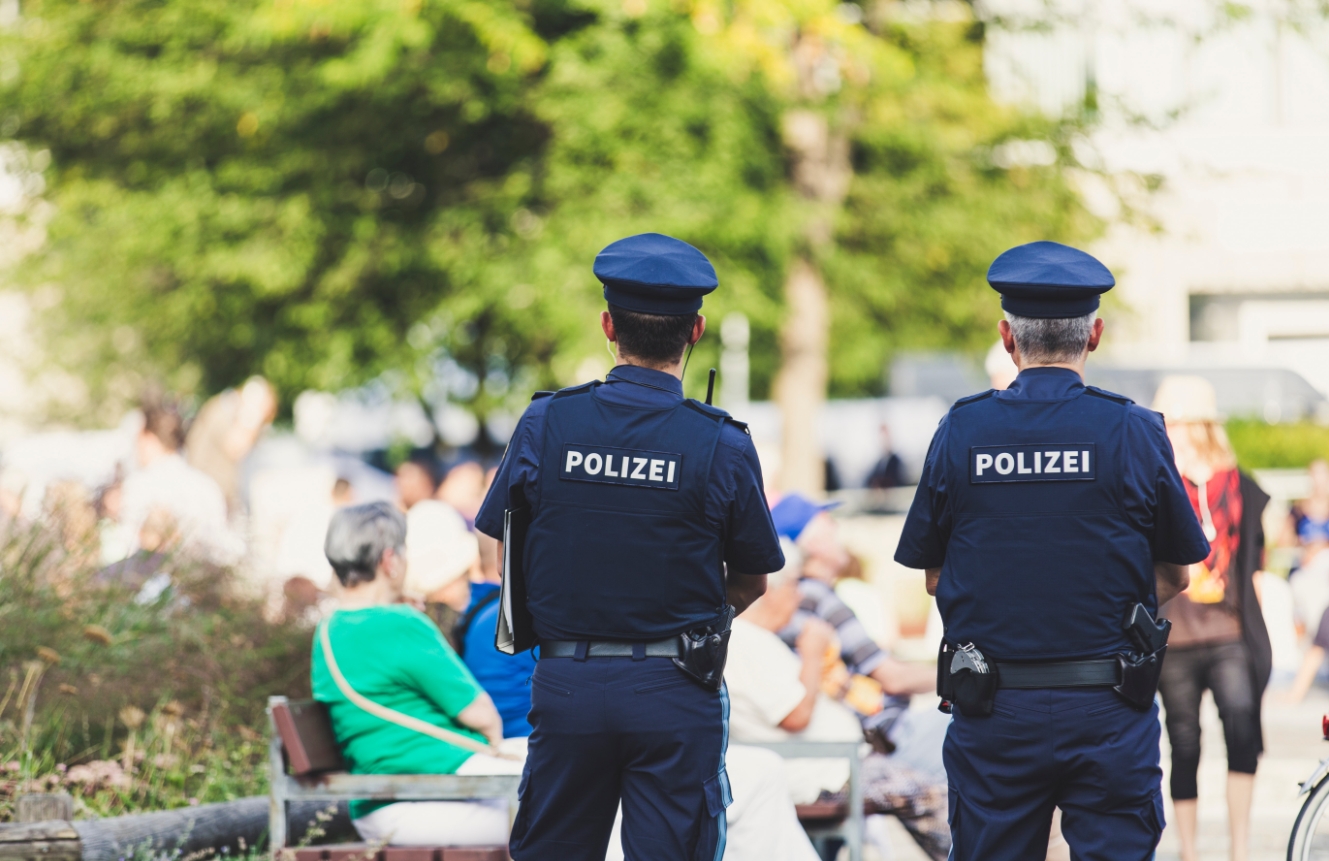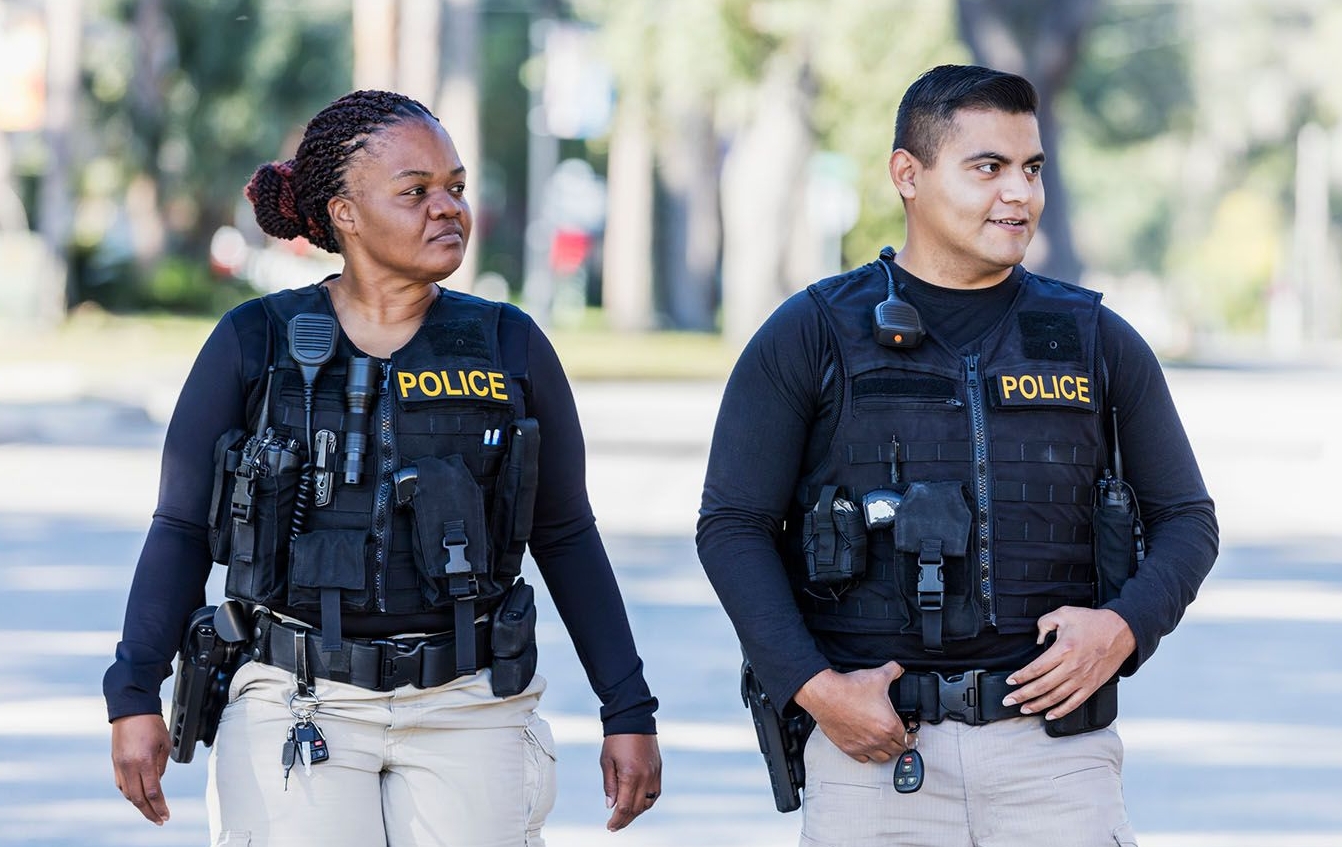In recent years, the use of body cameras by law enforcement agencies has gained significant attention and sparked widespread debate. These small devices, worn by police officers, have the potential to revolutionize policing practices by capturing real-time footage of interactions between officers and the public. This blog post explores the benefits and challenges associated with law enforcement body cameras and their impact on accountability, transparency, and public trust.
.jpg)
The Need for Transparency and Accountability in Law Enforcement
Maintaining public safety and upholding the law are fundamental responsibilities entrusted to law enforcement agencies. However, incidents of alleged misconduct and excessive use of force have understandably eroded public trust and raised concerns about the transparency and accountability of some law enforcement practices. In order to bridge this trust deficit, the adoption of body cameras by law enforcement agencies has emerged as a promising solution.
Body cameras worn by police officers have the potential to revolutionize policing practices by providing an objective and unbiased record of law enforcement interactions. These small devices capture real-time footage of encounters between officers and the public, offering a comprehensive visual account of events. The recorded footage can play a pivotal role as vital evidence in investigations, guaranteeing a more precise and unbiased assessment of incidents.
By providing an unfiltered perspective, body cameras enhance transparency in law enforcement. They offer an unbiased record of actions and behaviors, enabling a clearer understanding of the dynamics at play during encounters. This transparency not only serves the public's interests but also promotes accountability among law enforcement officers for their actions. It acts as a mechanism for identifying and addressing any instances of misconduct, promoting responsible policing practices, and deterring the misuse of power.
Furthermore, body cameras serve as a means to safeguard both officers and citizens from unfounded accusations. The recorded footage provides an objective account of events, preventing misinformation, and enabling a fair assessment of incidents. This serves to safeguard the reputation of law enforcement personnel and ensure that due process is followed in investigations.
However, the implementation of body cameras is not without challenges. Privacy concerns, storage and retention of data, and the appropriate use of recorded footage are important considerations that must be addressed through well-defined policies and guidelines. Striking the right balance between transparency and privacy is crucial to ensure that the benefits of body cameras are maximized while respecting the rights and dignity of individuals.
In conclusion, the utilization of body cameras presents a promising solution to bolster transparency and accountability within law enforcement agencies. By providing an objective record of interactions, they promote responsible policing practices, protect both officers and citizens, and contribute to rebuilding public trust. As technology advances and best practices evolve, the effective deployment and utilization of body cameras can contribute to a more accountable and transparent future in law enforcement.

Enhancing Officer and Public Safety
The presence of body cameras has a powerful deterrent effect on potential misconduct and can contribute to de-escalating volatile situations. When officers and citizens are aware that their actions are being recorded, it encourages responsible behavior and accountability. This knowledge acts as a powerful incentive for officers to adhere to proper protocols and guidelines, reducing the likelihood of excessive force or violent confrontations.
Furthermore, body cameras provide valuable evidence in criminal investigations, ensuring fair and just outcomes. The recorded footage offers an unbiased account of events, providing a clear picture of what transpired during an interaction. This evidence can be pivotal in corroborating or refuting claims made by both officers and citizens, helping to establish the truth and prevent wrongful convictions or false accusations.
The knowledge that their actions are being captured on camera also encourages officers to follow proper procedures and guidelines, promoting professionalism and adherence to established protocols. This can lead to improved officer training and accountability within law enforcement agencies.
In summary, body cameras have the potential to make a substantial positive impact on the behavior of both officers and citizens during encounters. By serving as a deterrent to potential misconduct, they contribute to creating a safer environment and building trust between law enforcement agencies and the communities they serve. Moreover, the valuable evidence captured by body cameras plays a crucial role in criminal investigations, ensuring a fair and equitable legal process and instilling confidence in the justice system.

Strengthening Police-Community Relations
Transparent and accountable law enforcement practices are crucial for establishing and nurturing trust between police departments and the communities they serve. In this regard, body cameras can play a pivotal role in bridging the gap and fostering improved relationships.
The presence of body cameras helps dispel biases and misconceptions by providing an objective and accurate account of events. It offers a visual representation of law enforcement actions, allowing the public to witness firsthand the challenges and complexities officers face on a daily basis. This transparency helps build a better understanding of the realities of law enforcement and can contribute to more informed and empathetic perceptions.
By capturing interactions between officers and the public, body cameras promote accountability on both sides. It holds law enforcement officers accountable for their actions, ensuring they adhere to established protocols and guidelines. Simultaneously, it also holds citizens accountable for their behavior during encounters with the police.
When law enforcement agencies embrace the use of body cameras and make the footage available when appropriate, it demonstrates a commitment to transparency and builds trust within the community. It establishes a sense of openness and shows that the department is willing to be held accountable for its actions. This fosters a positive perception of law enforcement, reduces skepticism, and strengthens the bond between police and the communities they serve.
In conclusion, body cameras act as a tool to promote transparency and accountability in law enforcement. By providing an accurate account of events and dispelling biases, they contribute to a better understanding of law enforcement actions. This, in turn, helps build and maintain trust between the police and the communities they serve, leading to improved relationships and safer environments for all.

Protecting Officers from False Accusations
Body cameras serve as a crucial tool for law enforcement officers to protect themselves against false accusations. The recorded footage provides an objective and unbiased account of encounters, helping to prevent the misrepresentation or distortion of events.
In situations where officers are falsely accused of misconduct, body camera footage can provide irrefutable evidence of what actually transpired. It allows for a comprehensive review of the entire incident, ensuring a fair and accurate assessment. This not only protects the reputation and integrity of individual officers but also contributes to a fairer and more balanced evaluation of incidents involving law enforcement.
By relying on recorded evidence, law enforcement agencies can avoid relying solely on conflicting testimonies or subjective interpretations of events. The visual and audio documentation captured by body cameras provides an objective record that can be reviewed and analyzed by investigators, legal professionals, and relevant authorities.
Moreover, body camera recordings can also serve as a valuable training tool. They allow law enforcement agencies to conduct thorough reviews to identify areas for improvement, enhance officer training, and refine protocols and procedures. By learning from real-life encounters, agencies can continually strive for professionalism and excellence in their practices.
In summary, body cameras play a vital role in protecting officers from false accusations by providing an objective account of encounters. The use of recorded evidence helps prevent the misrepresentation of events, leading to fairer assessments and ensuring justice for all parties involved. By leveraging this valuable resource, law enforcement agencies can uphold accountability, enhance transparency, and maintain public trust.

Privacy and Ethical Considerations
The implementation of body cameras in law enforcement comes with a set of important privacy and ethical considerations that must be carefully addressed. While the use of these cameras enhances transparency and accountability, it is essential to strike a balance between these objectives and the privacy rights of individuals involved in recorded interactions.
To begin with, clear and comprehensive policies and guidelines should be established to govern the use of body cameras. These policies should address concerns related to the collection, storage, and access to recorded footage. It is crucial to outline when and where cameras should be activated, ensuring that officers respect privacy in certain situations, such as in private residences or sensitive locations like hospitals or schools.
Another key aspect is the storage and retention of recorded data. Strict protocols should be in place to securely store the footage and prevent unauthorized access. Considerations should be made regarding the length of time recorded data is retained and the process for deleting footage that is no longer needed for evidentiary or accountability purposes.
Access to recorded footage should also be carefully regulated. Only authorized personnel, such as investigators and legal professionals, should have access to the footage, and there should be clear protocols in place to ensure that access is granted for legitimate purposes only. Safeguards should be implemented to prevent misuse or unauthorized dissemination of the recorded content.
Furthermore, anonymization and redaction techniques can be employed to protect the privacy of individuals who are not directly involved in an incident but may be captured in the footage. This ensures that the identities and personal information of innocent bystanders or victims are safeguarded.
Additionally, ongoing training and education for law enforcement personnel on the proper use of body cameras and the importance of respecting privacy rights are crucial. Officers should be aware of the ethical considerations involved and understand the impact of their actions on the privacy of individuals.
In conclusion, while body cameras offer valuable benefits in terms of transparency and accountability, privacy and ethical concerns must be taken seriously. Establishing robust policies, addressing storage and access protocols, and providing adequate training are essential in ensuring that the use of body cameras respects privacy rights while achieving the desired objectives of transparency and accountability in law enforcement.
Implementing Effective Policies and Training
The successful integration of body cameras in law enforcement requires the development of comprehensive policies and the implementation of training programs. These measures are crucial to ensure that the use of body cameras is effective and aligns with privacy rights and ethical considerations.
Clear guidelines should be established to outline when body cameras should be activated during law enforcement interactions. This helps define the circumstances in which recording is necessary, such as during arrests, traffic stops, or responses to incidents. By providing specific instructions, agencies can ensure that officers understand when it is appropriate to use the cameras, promoting consistency and accountability.
Additionally, policies should address how recorded footage is stored and retained. Guidelines should specify the length of time that data should be retained, taking into account legal requirements, evidentiary purposes, and the protection of privacy. Proper storage protocols should be established to safeguard the integrity and security of the recorded data, including encryption and access controls.
Access to the recorded data should be carefully regulated to prevent unauthorized use or dissemination. Policies should clearly define who has access to the footage and under what circumstances. This ensures that access is granted only to authorized personnel, such as investigators and legal professionals, and for legitimate purposes, such as criminal investigations or legal proceedings.
Furthermore, comprehensive training programs are essential to educate law enforcement personnel on the ethical considerations and privacy issues associated with body camera deployment. Officers should receive training on camera usage, including how to activate and deactivate the cameras appropriately. They should understand the importance of respecting privacy rights and be aware of any legal limitations or restrictions regarding the use of body cameras.
By establishing comprehensive policies and providing adequate training, law enforcement agencies can successfully integrate body cameras into their practices. This ensures that the use of body cameras is consistent, respects privacy rights, and aligns with ethical standards, ultimately enhancing transparency, accountability, and public trust in law enforcement.Law enforcement body cameras have the potential to significantly enhance transparency, accountability, and public trust in policing. While they are not a panacea for all the challenges faced by law enforcement agencies, their implementation can serve as a powerful tool to promote responsible policing practices, protect officers and citizens alike, and foster stronger police-community relations. Striking the right balance between transparency and privacy is crucial, and it is essential for agencies to establish robust policies and training protocols to ensure that body cameras are effectively utilized and their full potential is realized. By embracing this technology and addressing the associated challenges, we can move towards a more accountable and transparent future in law enforcement.
Implementing Effective Policies and Training
The successful integration of body cameras in law enforcement requires the development of comprehensive policies and the implementation of training programs. These measures are crucial to ensure that the use of body cameras is effective and aligns with privacy rights and ethical considerations.
Clear guidelines should be established to outline when body cameras should be activated during law enforcement interactions. This helps define the circumstances in which recording is necessary, such as during arrests, traffic stops, or responses to incidents. By providing specific instructions, agencies can ensure that officers understand when it is appropriate to use the cameras, promoting consistency and accountability.
Additionally, policies should address how recorded footage is stored and retained. Guidelines should specify the length of time that data should be retained, taking into account legal requirements, evidentiary purposes, and the protection of privacy. Proper storage protocols should be established to safeguard the integrity and security of the recorded data, including encryption and access controls.
Access to the recorded data should be carefully regulated to prevent unauthorized use or dissemination. Policies should clearly define who has access to the footage and under what circumstances. This ensures that access is granted only to authorized personnel, such as investigators and legal professionals, and for legitimate purposes, such as criminal investigations or legal proceedings.
Furthermore, comprehensive training programs are essential to educate law enforcement personnel on the ethical considerations and privacy issues associated with body camera deployment. Officers should receive training on camera usage, including how to activate and deactivate the cameras appropriately. They should understand the importance of respecting privacy rights and be aware of any legal limitations or restrictions regarding the use of body cameras.
By establishing comprehensive policies and providing adequate training, law enforcement agencies can successfully integrate body cameras into their practices. This ensures that the use of body cameras is consistent, respects privacy rights, and aligns with ethical standards, ultimately enhancing transparency, accountability, and public trust in law enforcement.Law enforcement body cameras have the potential to significantly enhance transparency, accountability, and public trust in policing. While they are not a panacea for all the challenges faced by law enforcement agencies, their implementation can serve as a powerful tool to promote responsible policing practices, protect officers and citizens alike, and foster stronger police-community relations. Striking the right balance between transparency and privacy is crucial, and it is essential for agencies to establish robust policies and training protocols to ensure that body cameras are effectively utilized and their full potential is realized. By embracing this technology and addressing the associated challenges, we can move towards a more accountable and transparent future in law enforcement.


 French
French German
German Arabic
Arabic Italian
Italian Spanish
Spanish Japanese
Japanese Persian
Persian Korean
Korean Chinese (Simplified)
Chinese (Simplified)










